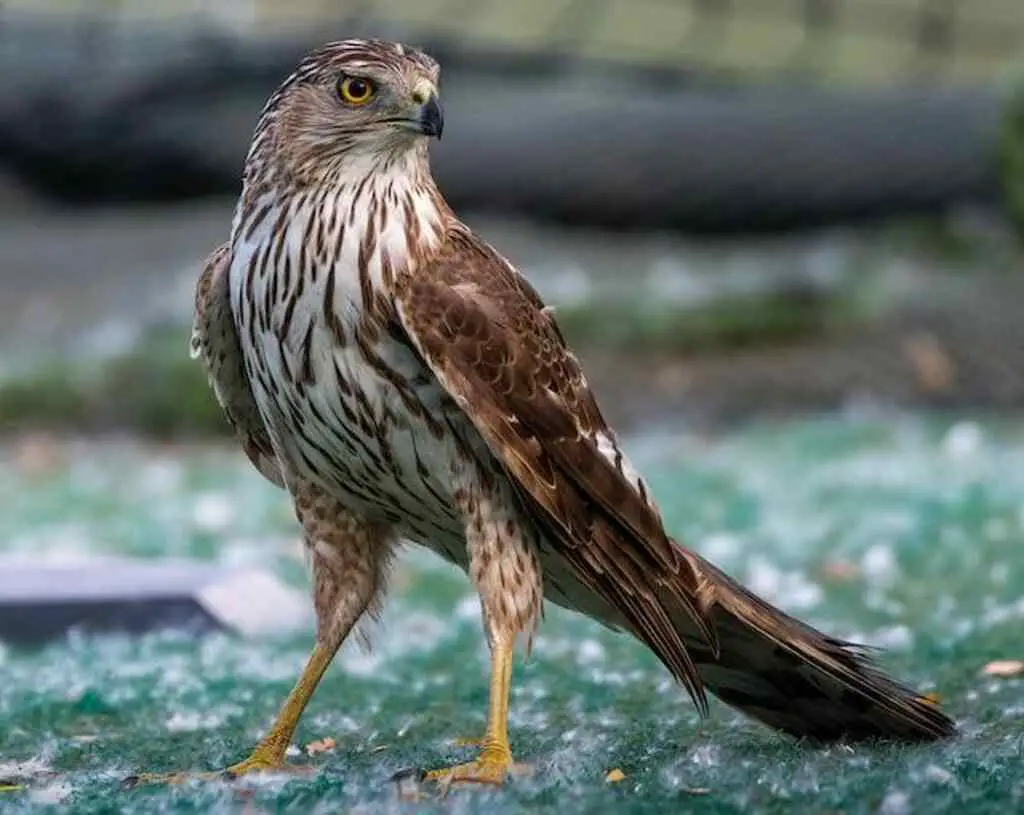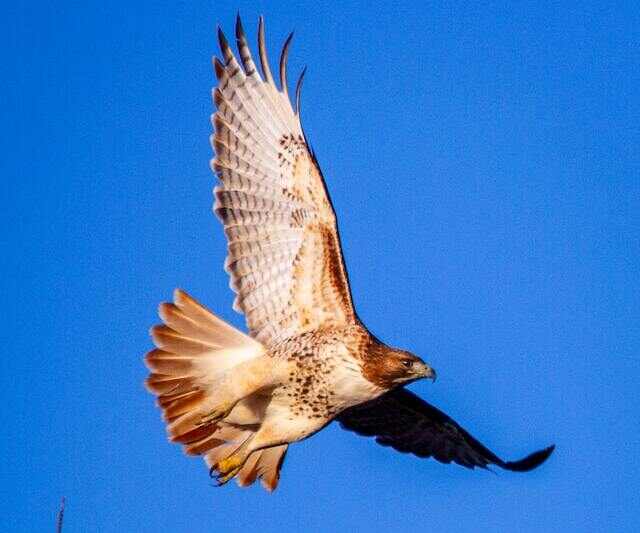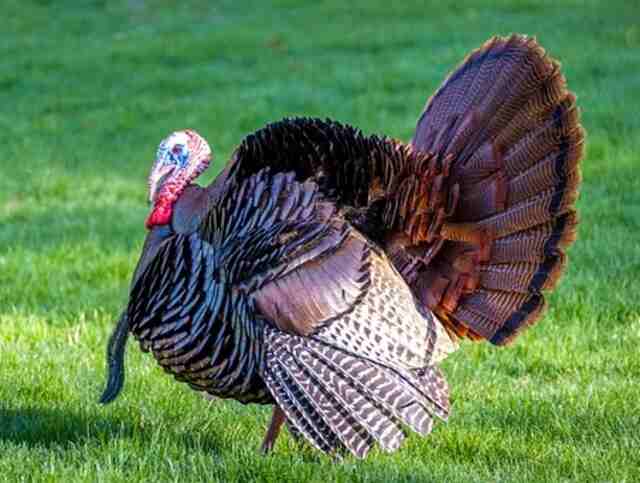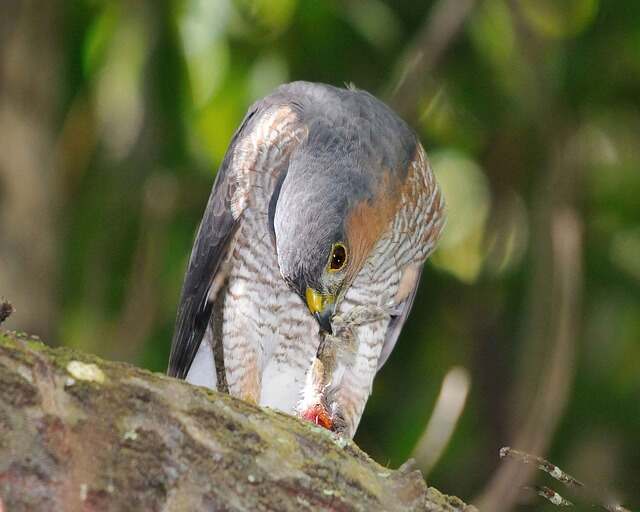Gobble, gobble! We often use animal metaphors to describe human behavior, like being a “hawk” – focused, vigilant, and sharp. But what do hawks really do?
These majestic birds of prey have captivated ornithologists and ecologists with their keen eyesight, powerful talons, and sharp beaks.
Join us as we unravel the mystery of their appetite and answer the burning question: Do Hawks Eat Turkeys?
Discover the fascinating dynamics between these two species and unravel the secrets of their wild interactions.
Table of Contents
- 1 Key Takeaways
- 2 Overview of Hawks and Their Prey
- 3 Common Prey of Hawks
- 4 Vulnerability of Turkeys to Predators
- 5 Do Hawks Eat Turkeys
- 6 Instances of Hawks Hunting Turkeys
- 7 Characteristics of Hawks that Allow Them to Hunt Turkeys
- 8 Impact of Hawk Predation on Turkey Populations
- 9 Other Predators of Turkeys
- 10 Ways to Protect Turkeys from Predators
- 11 Legal Protections for Hawks and Turkeys
- 12 Frequently Asked Questions
- 13 Conclusion
- 14 Author
Key Takeaways
- Hawks are birds of prey with keen eyesight, powerful talons, and sharp beaks that hunt a diverse range of prey including small mammals, birds, reptiles, and insects.
- Turkeys are large, ground-dwelling birds that are slow and clumsy in flight, making them easy targets for predators, including hawks.
- Excessive hawk predation can have negative effects on turkey populations, and understanding the hunting behavior of hawks is important in developing strategies to protect vulnerable bird populations.
- Predator-prey dynamics play a crucial role in maintaining a healthy ecosystem, and hawks are important in regulating the population of prey.

Overview of Hawks and Their Prey
Hawks are known for their predatory behavior and have a diverse range of prey, including small mammals, birds, reptiles, and insects.
These birds of prey are found in various habitats, from forests to grasslands, and their hunting techniques vary depending on the species and prey.
Some hawks hunt by soaring high in the sky and swooping down on their prey, while others hunt by perching on a branch and waiting for their prey to come within striking distance.
Habitat preferences play a significant role in determining the type of prey hawks hunt, as they tend to hunt in areas where their preferred prey is abundant.
While hawks are known to prey on turkeys, they also target smaller birds, rodents, and insects.
Understanding the common prey of hawks can provide insight into their hunting behavior and help us better appreciate the role they play in maintaining a healthy ecosystem.
Common Prey of Hawks
Common prey of raptors include small mammals, reptiles, and birds, such as rodents, snakes, and songbirds. Prey preferences can vary depending on the species of hawk and their hunting techniques.
For example, some hawks, like the Cooper’s hawk, are known for preying on small birds, while others, like the red-tailed hawk, prefer larger prey such as rabbits or squirrels.
Hawks have developed a variety of hunting techniques to catch their prey, including hovering in mid-air to spot prey below, swooping down to catch prey on the ground, or even chasing prey in mid-flight.
Despite their impressive hunting abilities, hawks are not always successful in catching their intended prey, which can lead to a vulnerability to predators.
This vulnerability will be explored further in the subsequent section about the vulnerability of turkeys to predators.
Vulnerability of Turkeys to Predators
The survival of turkeys is threatened by a variety of predators, which are drawn to their unique physical characteristics and behavior patterns.
Turkeys are large, ground-dwelling birds that are relatively slow and clumsy in flight, which makes them easy targets for predators such as coyotes, foxes, and bobcats.
Additionally, turkeys have a tendency to roost in trees at night, which exposes them to nocturnal predators like raccoons and owls.
However, turkeys do have some natural defense mechanisms that help them avoid predators, such as their keen eyesight and excellent hearing.
They are also able to run at high speeds and fly short distances to escape danger.
Despite these defenses, turkeys remain vulnerable to predation, and instances of hawks hunting turkeys have been observed.
These predatory birds are known to target smaller prey, but they have been known to attack larger animals, including turkeys, especially during the winter months when food is scarce.

Do Hawks Eat Turkeys
Yes, hawks are known to eat turkeys. Hawks are predatory birds that have a diverse diet, which includes small mammals, birds, and sometimes even larger prey like turkeys.
Turkeys, particularly young or injured ones, can be vulnerable to hawk attacks. Hawks use their sharp talons and beaks to capture and kill their prey, including turkeys.
However, it’s worth noting that hawks are not the sole predators of turkeys, as other animals such as coyotes and foxes may also prey on them.
Instances of Hawks Hunting Turkeys
Observations of raptors preying on turkeys have been documented, indicating the potential threat these predatory birds pose to larger prey during times of food scarcity.
Hawks are known to hunt turkeys, but these instances are relatively rare due to the size and strength of their prey.
However, when food sources are scarce, hawks may turn to larger prey, including turkeys.
These hunting behaviors have been observed in the wild, and researchers have documented the methods and strategies that hawks use to capture turkeys.
Hawks are known for their speed and agility, and they use these characteristics to chase down their prey. They also have sharp talons and beaks, allowing them to quickly immobilize and kill their prey.
Additionally, hawks are skilled at ambushing their prey, using surprise and stealth to catch them off guard.
These characteristics make hawks formidable predators, and they demonstrate the potential danger they pose to other birds, including turkeys.
Understanding the hunting behavior of hawks is an important step in developing strategies to protect vulnerable bird populations.
In the next section, we will explore the characteristics of hawks that allow them to hunt turkeys.
Characteristics of Hawks that Allow Them to Hunt Turkeys
With their exceptional speed, agility, and sharp talons, hawks possess the necessary characteristics to capture larger prey such as turkeys.
Hawks are known for their impressive hunting techniques, including a high-speed dive known as a stoop, which allows them to quickly and accurately target their prey.
Additionally, hawks are able to survey their surroundings with keen eyesight, enabling them to spot potential prey from great distances.
In order for hawks to successfully hunt turkeys, they must have a strong understanding of their behavioral patterns, including where they tend to roost and forage.
As a result, hawks are able to strategically plan their attacks, often waiting for the perfect moment to strike.
While hawks are known for their ability to hunt turkeys, the impact of their predation on turkey populations is a complex issue that requires further examination.
Impact of Hawk Predation on Turkey Populations
Despite the complexity of the issue, hawk predation has a significant impact on the population dynamics of turkeys, which is a proverbial double-edged sword.
On the one hand, hawks are important predators that help maintain a balance in the ecosystem by regulating the population of their prey.
On the other hand, excessive hawk predation can have negative effects on turkey populations, especially in areas where habitat loss and hunting activities have already reduced their numbers.
Predator-prey dynamics play a crucial role in this relationship, as the hunting strategies of hawks can influence the success rate of their attacks on turkeys.
For instance, some hawks may have a preference for targeting juvenile or injured turkeys, which can have a disproportionate effect on the overall population.
To illustrate this point, consider the following table that shows the estimated impact of hawk predation on turkey populations in different regions:
| Region | Average Hawk Population | Estimated Turkey Mortality | Impact on Turkey Population |
|---|---|---|---|
| A | 50 | 10 | Decrease |
| B | 100 | 20 | Decrease |
| C | 200 | 30 | Decrease |
As the table shows, regions with higher hawk populations tend to have higher mortality rates for turkeys, which can lead to a decrease in their overall population.
These findings highlight the importance of understanding the dynamics of predator-prey relationships in managing wildlife populations.
In the next section, we will explore other predators of turkeys and their impact on their populations.
Other Predators of Turkeys
The diversity of predators that prey on turkeys demonstrates the complex interplay between predator and prey populations in ecosystems.
While hawks are known for their predation on turkeys, they are not the only avian predator that poses a threat to these birds.
Other birds of prey such as eagles and owls may also prey on turkeys, especially young or injured individuals.
Additionally, coyote attacks are a significant threat to turkey populations, as they can hunt in packs and take down larger prey.
It is important to understand the various predators that turkeys face in order to develop effective strategies for their protection.
In the following section, we will explore ways to protect turkeys from predators.

Ways to Protect Turkeys from Predators
One effective approach to safeguarding turkey populations from their varied predators involves implementing strategies that focus on habitat management and predator control.
Predator proofing techniques such as fencing and netting can be used to prevent predators from accessing turkey habitats.
Natural deterrents such as guard animals and scare tactics can also be employed to deter predators from approaching.
However, these methods may not be foolproof, as some predators are intelligent and adapt to these techniques.
In addition to these measures, predator control involving the removal of predator populations in the area can also be considered.
However, this approach must be carefully balanced with the need to maintain ecosystem balance and prevent unintended consequences.
Ultimately, protecting turkeys from predators requires a multifaceted approach that considers multiple factors such as habitat management, predator control, and natural deterrents.
The next section will explore legal protections for both hawks and turkeys, highlighting the importance of balancing conservation efforts with the management of predator populations.

Legal Protections for Hawks and Turkeys
Legal protections for both hawks and turkeys are an important consideration in balancing conservation efforts with the management of predator populations.
These protections are necessary to ensure that these species are not threatened by habitat destruction, hunting, or other human activities.
Hawks are protected under the Migratory Bird Treaty Act and the Bald and Golden Eagle Protection Act, while turkeys are protected under state and federal regulations.
These protections include restrictions on hunting, trapping, and disturbance of nesting sites.
In addition, conservation efforts have focused on restoring and protecting habitats for both hawks and turkeys, including the creation of protected areas and the promotion of sustainable land use practices.
However, these efforts must be balanced with the management of predator populations, including hawks, to prevent negative impacts on other species and ecosystems.
Frequently Asked Questions
What is the average lifespan of a hawk?
The average lifespan of a hawk varies depending on several factors affecting hawk lifespan, including habitat quality, predation, and disease. Hawk conservation efforts aim to address these factors and ensure the survival of these majestic birds of prey.
How do hawks hunt prey other than turkeys?
Hawk hunting techniques involve a variety of prey selection strategies, including visual, auditory, and olfactory cues. They use their sharp talons and beaks to capture prey, and may also employ aerial maneuvers and surprise attacks. These adaptations allow hawks to hunt effectively and efficiently in their natural habitats.
Can turkeys defend themselves against hawks?
In the predator-prey relationship, turkeys have developed several survival tactics to defend themselves against predators. These include alarm calls, flocking, and running. However, against a skilled predator like a hawk, their chances of survival are still slim.
Are there any subspecies of hawks that specialize in hunting turkeys?
Certain subspecies of hawks, such as the Cooper’s hawk and the goshawk, have specialized adaptations that enable them to hunt larger prey, including turkeys. These hawks exhibit territorial behavior and are skilled at ambushing their prey.
What is the historical relationship between hawks and turkeys in North America?
Predator-prey dynamics between hawks and turkeys in North America have been complex and multifaceted. While hawks are known to prey on turkeys, both species have cultural significance and are intertwined in the ecological and historical fabric of the continent.

Conclusion
In conclusion, hawks are formidable predators that are known to hunt a variety of prey, including turkeys. These birds of prey possess a range of physical and behavioral adaptations that enable them to capture and kill their quarry with efficiency and skill.
While the vulnerability of turkeys to predation by hawks may be cause for concern among conservationists and wildlife enthusiasts, it is important to recognize that these interactions are a natural part of the ecosystem.
As we consider the impact of hawk predation on turkey populations, it is important to note that hawks are not the only predators that threaten these birds.
Other predators, such as foxes, raccoons, and coyotes, also pose a significant threat to turkey populations.
Additionally, there are a variety of measures that can be taken to protect turkeys from predation, such as avoiding areas with high predator activity and providing cover and roosting sites for turkeys.
In the end, the relationship between hawks and turkeys is a complex one that is shaped by a variety of factors, including habitat, prey availability, and predator behavior.
While the image of a hawk swooping down to capture a turkey may be a dramatic one, it is important to remember that these interactions are a natural part of the ecosystem, and that both hawks and turkeys play important roles in maintaining the balance of nature.




